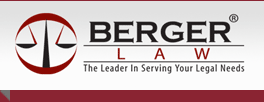New Option for Home Office Deduction Offers Greater Simplicity, Potentially Smaller Benefit
 With ever-advancing technology simplifying the process of working remotely, and more people pursuing home-based businesses, the number of taxpayers with home offices is steadily rising. One potential benefit of maintaining a home office is the income tax deduction that comes with it. Starting with your 2013 taxes, the Internal Revenue Service will offer an easier way to claim that deduction, although the new option does contain potential drawbacks.
With ever-advancing technology simplifying the process of working remotely, and more people pursuing home-based businesses, the number of taxpayers with home offices is steadily rising. One potential benefit of maintaining a home office is the income tax deduction that comes with it. Starting with your 2013 taxes, the Internal Revenue Service will offer an easier way to claim that deduction, although the new option does contain potential drawbacks.
According to IRS statistics, more than 3.3 million taxpayers claimed the home office deduction on their 2010 federal income taxes. To claim the deduction, the IRS required taxpayers to complete Form 8829, “Expenses for Business Use of Your Home,” a 43-line document that, as the New York Times described, “often involves complex calculations of allocated expenses, depreciation and carryovers of unused deductions.”
The agency, in the interest of reducing paperwork and record-keeping obligations, unveiled Rev. Proc. 2013-13 last month, which contains a new way for taxpayers to claim the deduction. Starting with 2013 tax returns, the IRS will allow taxpayers to calculate their home office deductions using a relatively simple formula. Under the new procedure, taxpayers take the total square footage of that portion of their homes used exclusively for business purposes, up to a maximum of 300 square feet, and multiply by a fixed rate prescribed by the IRS. Currently, the prescribed rate is $5.
This simplified protocol does have a “catch,” however. It contains a maximum size restriction on your home office, effectively creating a $1,500 cap on your deduction. Taxpayers who used Form 8829 faced no such cap. Additionally, taxpayers using the simplified option cannot claim additional deductions for depreciation of the home office space, which is available to taxpayers using Form 8829. The old method is not going away, however. The new procedure simply serves as an alternate option for claiming the deduction. Taxpayers may continue to use Form 8829 to calculate their home office deductions if they prefer. A taxpayer may use either option in any given year, and may switch from year to year. However, once a taxpayer selects an option for a particular tax year, he/she cannot change that year. Additionally, taxpayers who share a residence may each claim the deduction using the simplified method, but may not both assert the deduction based upon the same space. Each taxpayer must have a separate area that constitutes his/her home office. Furthermore, if your employer reimburses you for your home office expenses, or if you receive rental income from the property where you seek to claim your home office deduction, you cannot use the simplified method.
The IRS’s new simplified procedure may be a boon to taxpayers who traditionally recoiled at the complexity of Form 8829 or the recordkeeping necessary under the old protocol. For others, though, the cap on the home office deduction, along with the loss of the depreciation deduction, may be too high a price for enhanced simplicity. The tax attorneys at Samuel C. Berger, P.C. and the CPAs at S.C. Berger, P.C. can help people throughout New York and northern New Jersey determine what method for deducting home office expenses works best for them, as well as assisting with all manner of tax issues. To consult our attorneys and CPAs, contact us online or call (201) 587-1500 or (212) 380-8117.
More Blog Posts:
Almost Half of the Applications for H1-B Visas are from Computer Companies; New York Leads the Demand for Skilled Immigrants, New York & New Jersey Immigration Lawyer Blog, July 19, 2012
New York and New Jersey Small Businesses Consider Moving to the Cloud, New York & New Jersey Business Lawyer Blog, April 5, 2012
Small Businesses Must Adapt in Order to Make It in a Bad Economy, New York & New Jersey Business Lawyer Blog, Jan. 24, 2012
 Hackensack, New Jersey Home Office Deduction Attorney Samuel C Berger, PC Home
Hackensack, New Jersey Home Office Deduction Attorney Samuel C Berger, PC Home



